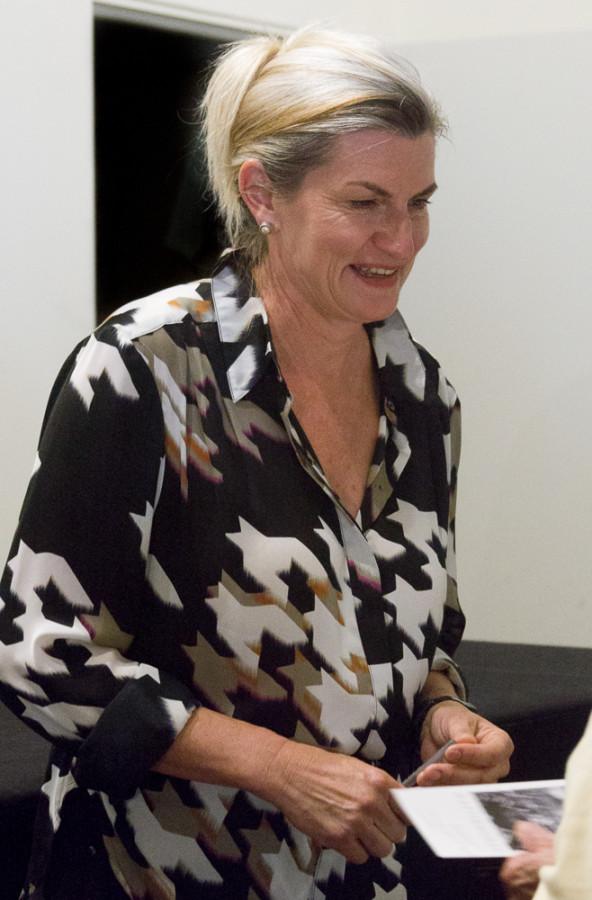Granddaughter delves into Ansel Adams’ life, photos
Jason Howell | The Daily Eastern News Sarah Adams, granddaughter of famous photographer Ansel Adams, gives a presentation on the life and selected works of her grandfather titled, “Ansal Adams: The American Earth” on Sunday at the Tarble Arts Center. Adams talked about her grandfather’s life and committment to various things such as environmental concerns. At the age of 28, Ansel Adams made a committment to photography and eventually became the official portritist for President Jimmy Carter, as well as receiving the Presidental Medal of Freedom from President Carter in 1980.
September 7, 2014
Sarah Adams hoped her grandfather’s photographs would inspire the audience, in the same way she found the stills of sweeping landscapes to be inspiring.
Standing in the atrium of the Tarble Arts Center on Sunday, Adams, the granddaughter of photographer Ansel Adams, recounted his life through the images he snapped and processed.
“I reread everything about my grandfather, Ansel, and it inspires me more and more,” Adams said.
Adams’ lecture was in conjunction with the ongoing exhibit “Ansel Adams: Masterworks,” which continues in Tarble through Oct. 19.
Adams took the audience through the life of the photographer in different sections, all of which had an impact on his life and development. And in these sections, the audience got to see larger-than-life versions of the immense, beautiful landscapes and nature areas Ansel favored.
Just in the way Adams was inspired by her grandfather’s photographs, Ansel was inspired by nature — and it reflected in the work he did.
One area Adams focused on was titled “Monolith,” which she said was a “pivotal point in Ansel’s career.” The photograph shown featured the Half Dome, which is a colossal cliff in Yosemite National Park.
A piece of land juts out of the Half Dome, called the diving board. Adams said Ansel climbed up the mountain to get to the diving board in 1927.
Along with the photograph that became Ansel’s final product of the Half Dome, Adams showed a different version. The final photo was shot using a red filter, which gave the photo a darker look, while the other used a yellow filter to convey a lightened image.
Adams said Ansel’s favorite place to photograph was the Yosemite National Park, and much of his work reflected that love.
However, he did venture into other areas, such as the Sierra Nevada, where he shot the Frozen Lake and Cliffs image in 1932, which turned out to be one of Ansel’s favorite photographs, Adams said.
Despite being an accomplished photographer, Adams said her grandfather originally set on a course to be a professional pianist. Even though he went into the field of photography, Adams said Ansel’s photographs showed a continued presence of music in the majesty of which they are portrayed.
Adams added that Ansel used to refer to the negatives of the photographs as the scores, while the finished products were the performances.
Interspersed with quotes from Ansel during his life, Adams’ lecture helped bring to life the photos, the images and the man behind the camera.
Bob Galuski (@BobGaluski) can be reached at 581-2812 or rggaluski@eiu.edu.





































































